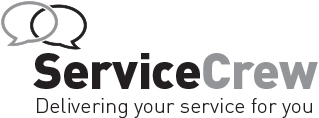Customised Service Level Agreement (SLA)
Creating an effective Service Level Agreement (SLA) requires careful consideration of various factors to ensure that your needs are met and that service expectations are clearly defined.

Service Level Agreement (SLA)
Things to ConsiderWhen DeterminingYour Service Level Agreement (SLA)
Here are key elements to consider:
Contact Method
- Email or Phone or Both: Determine the preferred method of communication for service requests and support.
Cut-Off Time
- 2pm, 3pm, 5pm: Choose the latest time by which service requests need to be received to ensure same-day processing.
Target Resolution
- Immediate Response: Within 2 hours of contact
- Next Day Response: Within 24 hours of contact
- Extended Response: 48 hours from confirmed fault, 72 hours from confirmed fault
Location
- Coverage Areas: UK and Ireland, including Primary, Secondary, and Offshore postcodes
SLA Counter Start
- Starting Point: Determine whether the SLA counter begins at the point of contact, warranty validation, or upon confirming the fault.
Attendance Time to Site
- Response Time: Define the attendance time to the site, choosing from 24 hours, 48 hours, 72 hours, 5 days, or longer.
Site Access
- Time Slots: Decide if specific time slots are needed (e.g., pre 9am, pre 10am, lunchtime 12-2, after 3pm, after 5pm, out of hours) or if access is available all day.
Equipment Height Considerations
- Install Height: Specify if the installation height of the equipment is a factor (e.g., up to 2.1 metres, 2.1-3.2m, over 3.2 metres).
Field Services to Undertake
- Types of Services:
- Repair on Site
- Swap Out from Site
- De/Re-install
- Loan Swap
- Demo Logistics Deliver & Set Up / Collect
Parts and Service Stock
- Will Parts be Supplied for Repair On Site
- Will Service Stock for Swap / Loan be available
-
Escalation Points
- Technical Queries: Identify the escalation point for technical issues.
- Customer Service Queries: Identify the escalation point for customer service issues.
-
Liability for No Fault Found Charges
- Charges for No Fault Found: Determine if users will be liable for charges if no fault is found.
-
Workshop Repairs
- Field Repair Backup: Specify if workshop repairs are required for issues not resolved in the field.
-
